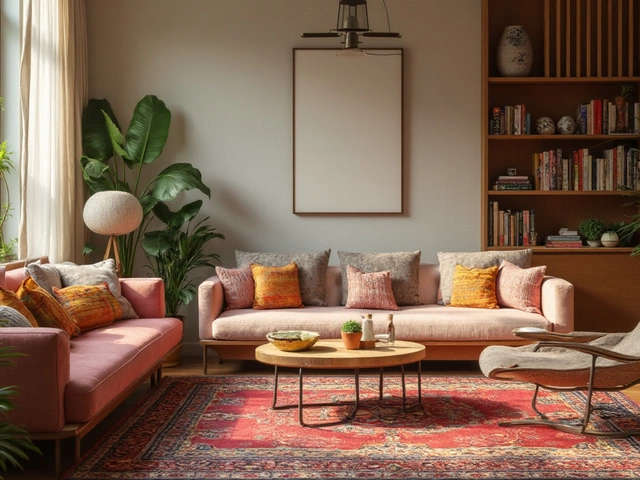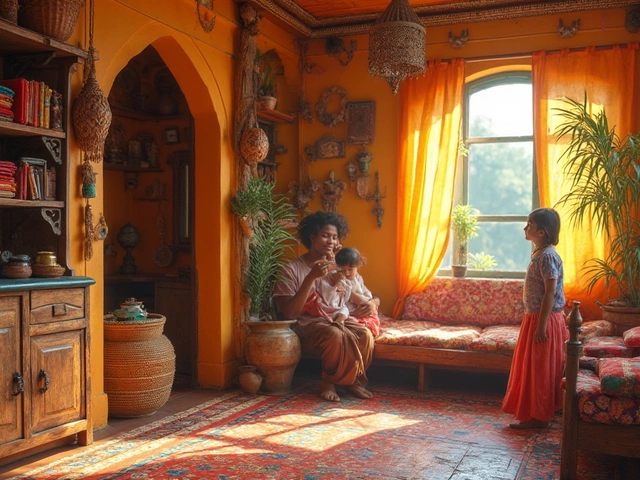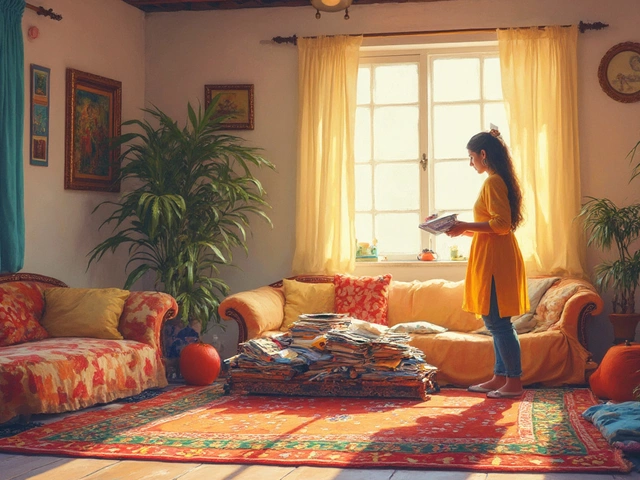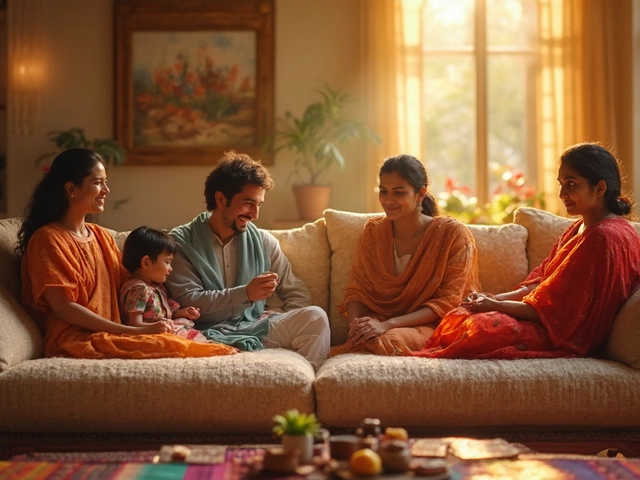Battling about where to put the TV? You're not alone. It actually makes a huge difference—sometimes the whole vibe of the living room hinges on that one spot. Mistake the wall, and you can mess up both comfort and the look of your wall art.
The best wall for your TV? It’s usually the one you can see straight-on from your favorite sofa. You want a spot that doesn’t make you crane your neck (nobody needs a sore back after a streaming binge). Pay attention to how daylight hits each wall—too much glare, and you’ll spend more time adjusting curtains than actually watching anything.
- Why TV Placement Matters
- Spotting the Best Wall
- Balancing TV and Wall Art
- Lighting and Glare Fixes
- Layout Tweaks and Final Touches
Why TV Placement Matters
TV placement isn’t just about what fits—it's about making your entire living room work better. Put your TV in the wrong spot, and watching shows turns into a neck workout or a squint-fest. The thing is, we spend hours glued to screens every week, so the setup really shapes the vibe and comfort of the room.
Straight-on viewing (at eye level) is best for comfort. Experts say the center of your TV screen should be roughly 42-48 inches from the floor for most sofa setups. Hang it too high, and your neck won’t thank you after movie night. If you go too low, everyone’s slouching.
Lighting can make or break your setup. Natural light from windows or overhead glare can wash out your picture and create annoying reflections right on your show. That’s why picking the right wall can save you headaches—literally and visually.
Your living room’s flow matters too. The main wall is often the star for TV placement, but weigh how people walk in and move through the space. You don’t want folks constantly crossing in front of the screen, especially with a tray of snacks in hand. If you’ve ever had Max, my dog, stroll by with muddy paws mid-movie, you know what I mean.
Finally, your TV shouldn’t hog all the attention. How you place it impacts what you do with art, shelves, or decor. The idea is to make the screen part of the room without letting it take over, giving your place that lived-in, not showroom, vibe.
Spotting the Best Wall
When it comes to picking the best wall for your TV, you want to get strategic. Comfort, room size, furniture layout, and where the windows sit all matter—there’s no magic answer that works for everyone. Still, a few tried-and-true rules can steer you in the right direction.
First up, experts always recommend thinking about your main seating. You don’t want to twist your neck just to see what's going on in your favorite show. The TV should be straight-on from where you’ll sit most. This isn’t just about comfort: A Cornell University study found that improper TV height or angle can actually lead to more headaches and neck pain in major binge-watching households.
Wall space counts for a lot, too. Choose a wall that isn’t broken up by lots of doors or windows. Too many openings steal your attention and mess with the viewing angle. The wall should also be wide enough for your TV, plus a little breathing room on each side. Crowded, squished screens never look good!
| Room Shape | Recommended Wall for TV |
|---|---|
| Rectangle (long) | Shortest wall opposite main seating |
| Rectangle (wide) | Longest uninterrupted wall |
| Square | Wall across from main entry or most open view |
Windows are a pain for TV placement. Natural light means glare. You’ll end up fiddling with blinds or getting annoying reflections. The best wall is usually the one least affected by daylight. If your only option is opposite a window, try using blackout curtains or get a tilting TV mount.
Then comes the power. If you don’t want ugly wires snaking down your wall, check where your outlets are. Planning to wall-mount? Make sure there’s room to run cords through the drywall or use neat cable covers that can be painted to match.
Home design guru Emily Henderson nailed it when she said,
“The best TV wall is the one you can see from every main seat, but doesn’t take over the whole room. Balance is everything.”
So here’s a quick checklist when you’re sizing up walls:
- Measure the wall and your TV. Leave 6-8 inches space on each side.
- Check the view from your sofa—straight shots work best.
- Avoid placing the TV across from big windows unless you love fighting glare.
- Make sure there’s an outlet nearby.
- Think about where your wall art and shelves already live.
Sometimes you’ll want to sketch a quick room map or get out some painter’s tape to eyeball the layout. If you share your space with a partner, don’t forget to do the "sit test" together before drilling any holes. It’s way easier to move tape than patch drywall.
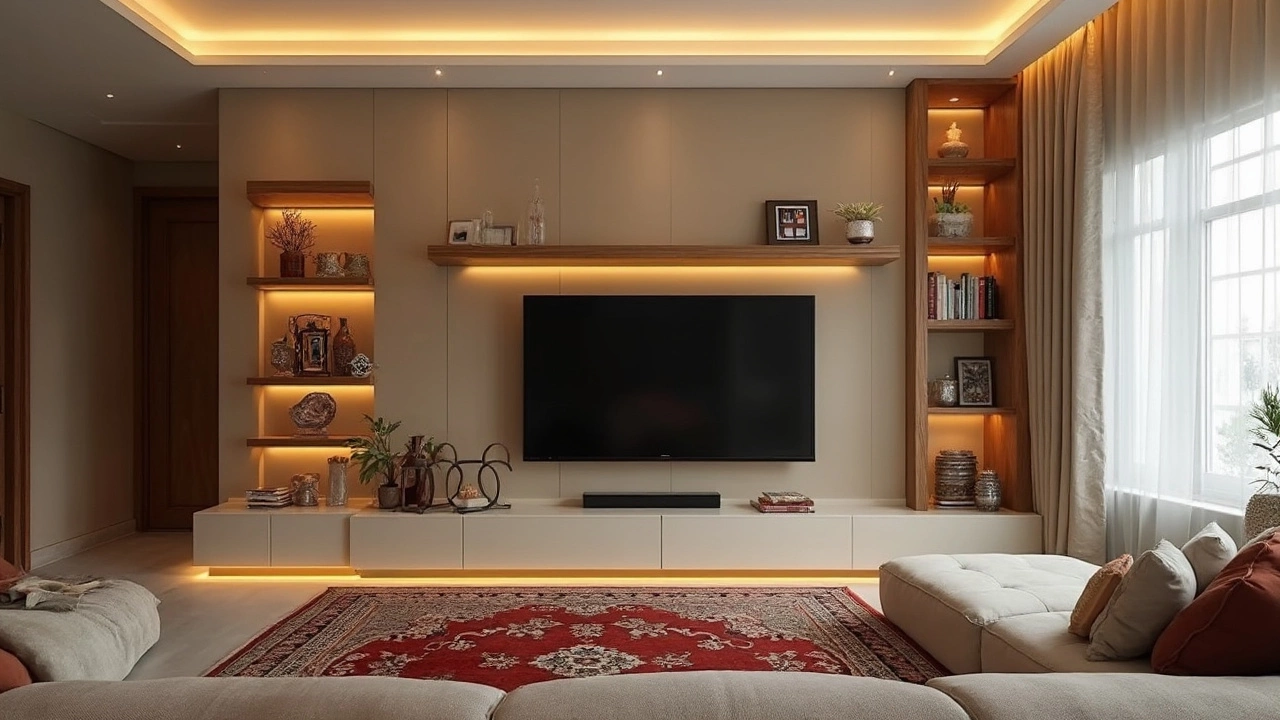
Balancing TV and Wall Art
Getting your TV and wall art to play nicely together isn’t just about squeezing both on the same wall. If you just slap a TV on a blank wall, it can look cold or unfinished, especially if you love decorating with art. So, let’s tackle how you can make your TV feel like it belongs, while still giving your favorite art pieces space to shine.
Most people want both a TV for shows and movies, and some eye-catching wall art for a personal touch. The trick is finding the right balance so one doesn’t steal all the attention. One popular approach is to create a gallery wall that mixes framed art with the TV in the middle or off to one side. It works surprisingly well—by framing the TV with art, you draw attention away from the black rectangle when it’s off.
- Use similar frames for both the TV and your art pieces for a clean look.
- Mix in a few shelves or plants to break up the hard edges of the TV.
- If you have a Samsung Frame TV (it literally looks like art), set it to art mode for a bigger wow factor.
- Hang art at the same height as the TV for easy eye movement across the wall.
Here’s something most folks don’t realize—your TV (and the wall around it) becomes a big visual anchor in the room. According to a 2023 survey by Houzz, 52% of homeowners hang art above or around their TV, saying it makes the space feel warmer and more inviting. If you want concrete guidance, the center of the TV should sit roughly 42 inches from the floor—eye level for most people when seated. Keep any art in this area spaced at least 2-3 inches from the TV so things don’t feel cramped.
Check this quick guide for mixing TVs and art based on living room style:
| Living Room Style | TV & Art Placement Tips |
|---|---|
| Modern | Stick with simple frames and symmetrical layouts. |
| Eclectic | Mix frame colors and art sizes. The TV doesn’t always need to be centered. |
| Minimalist | Limit art to one or two larger pieces, spaced neatly near the TV placement. |
The bottom line? Your TV and art can share the spotlight. It just takes a little planning, some good mounting tools, and maybe a few tweaks to your wall layout.
Lighting and Glare Fixes
Nobody wants to watch their favorite show through a sea of reflections. Light bouncing off the TV can totally ruin a good movie night. Here’s how to dodge glare and make the most of your setup.
First, notice where your windows and lights are during the hours you’re most likely to watch TV. Try to avoid putting your TV placement directly across from big windows or underneath bright ceiling lights. If the screen faces a window, every sunny afternoon equals extra frustration.
Some TVs these days come with anti-glare technology, but even those can't work miracles in a badly lit spot. Here’s what you can do to take control:
- Use adjustable window coverings. Simple roller shades, blackout curtains, or even basic blinds can deal with the sun when you’re mid-show. Bonus: they help keep your living room cooler in summer.
- Pick the right lamp. Floor lamps with dimmers or wall sconces pointing away from the screen won't bounce harsh light where you don't want it. Try to avoid overhead fixtures right in front of your TV.
- Mount your TV at eye level. When your screen is lined up with your eyes, it’s easier to dodge reflections. Too low or high and you’ll catch the shine from other angles.
- Consider a tilting wall mount. A mount that lets you angle the TV can sometimes shift reflections out of your direct line of sight.
- Test the spot at different times of day. Before drilling any holes, sit down on your favorite seat and check the screen when the sun’s up and when lights are on.
Here’s a quick breakdown of common glare sources and easy fixes:
| Glare Source | How to Fix It |
|---|---|
| Direct sunlight from windows | Use blackout curtains or shades |
| Ceiling lights | Switch to side lamps or bulbs with lower brightness |
| Glossy wall art near TV | Swap for matte finishes or move art away from TV zone |
| Reflected light from pale walls | Add darker art, wall hangings, or opt for a non-white backdrop |
Messing around with the lighting may take a little experimenting, but taming glare is totally worth it. You get clearer picture quality and your living room feels less cluttered—no more fighting with the curtains every time the sun pops out.
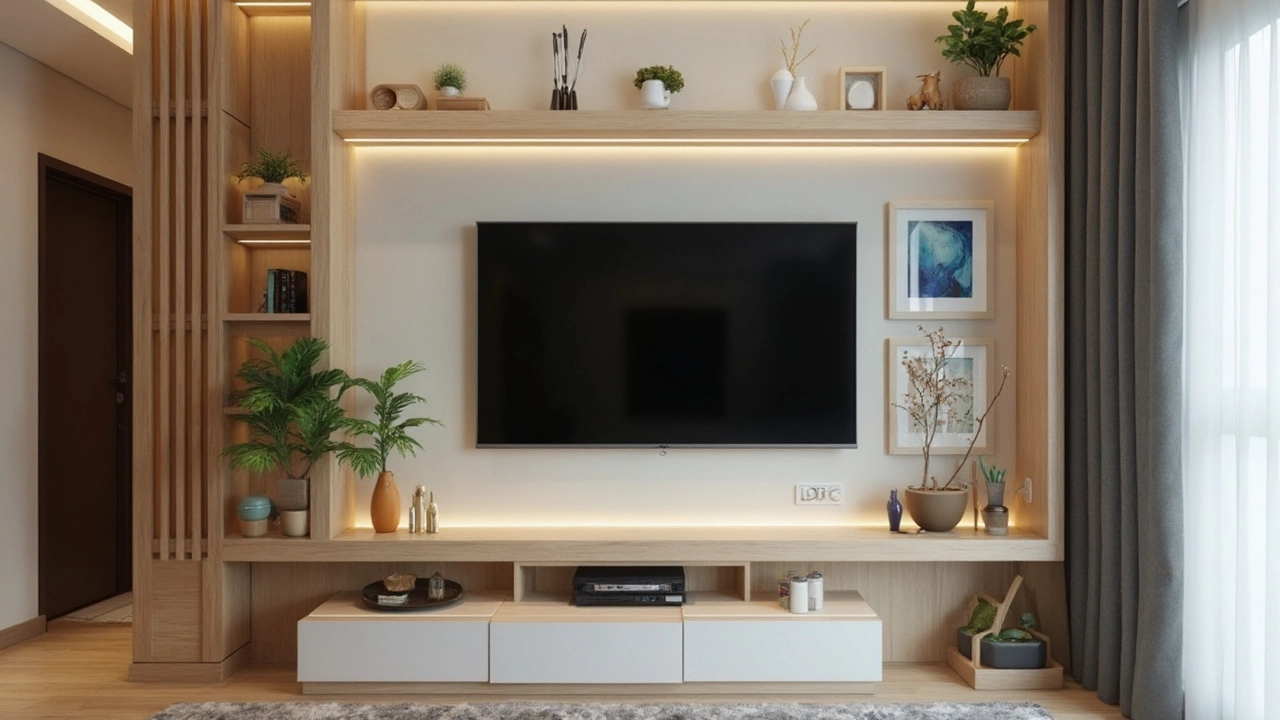
Layout Tweaks and Final Touches
Now you’ve picked your wall, but a good setup’s all about the details. Your TV and art won’t shine without smart layout tweaks. A common mistake? Jamming the couch way too close or backing it up against the wall. It’s not a movie theater—give yourself space for walking and lounging. Experts say the sweet spot for distance is about 1.5 to 2.5 times your TV’s diagonal size. For example, for a 55-inch TV, you want to sit at least seven feet back; you’ll get the best picture and your neck will thank you.
Wires can ruin the look of even the coolest setup. Use cord covers or, if you’re handy, run the wires behind drywall. It keeps things neat and lets TV placement steal the show, not the spaghetti mess of cables. If you rent, adhesive hooks or raceways work pretty well and won’t tick off your landlord.
- If you’re hanging the TV, make sure it’s at eye level when you’re seated—nobody loves staring up all night.
- Frame your TV with art or shelves so it blends in and doesn’t become a black hole in the room.
- Soundbars or small speakers go right under or beside the TV for better audio without dominating the space.
Here’s how layout elements usually shake out in real homes:
| Layout Type | Ideal TV Distance | Common Mistake |
|---|---|---|
| Compact Apartment | 5-7 feet | Couch too close, screen feels massive |
| Standard Living Room | 7-10 feet | Centering TV on wrong wall, off-center seating |
| Large Open Plan | 10-12 feet | TV feels tiny, gets lost on big wall |
Once your TV’s sorted, finish with a couple of mood lights, maybe a plant, and you’re done. You don’t want it to look like an electronics store. Aim for cozy, simple, and totally watchable.

